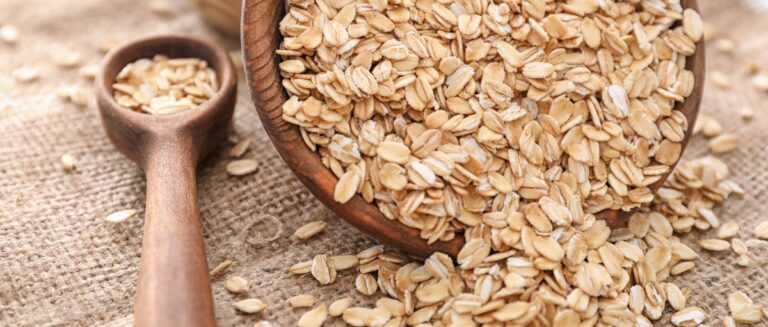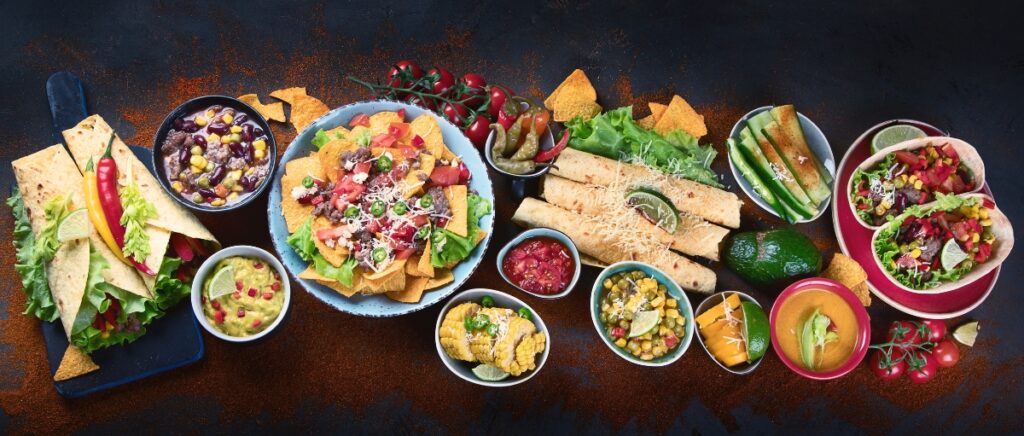Mexican cuisine has captured the hearts and taste buds of food lovers around the globe. Nearly one in ten restaurants in the U.S. has Mexican food on the menu. However, despite its irresistible flavors and global appeal, Mexican food often gets a bad rap when it comes to health. Many view it as an indulgent treat rather than a nutritious choice.
But is this reputation deserved? Is Mexican food inherently unhealthy, or is there more to the story?
In this comprehensive guide, we’ll explore the health benefits of traditional Mexican staples like corn, beans, and fresh produce. We’ll also examine how preparation methods and portion sizes impact the healthfulness of Mexican meals. Plus, you’ll get practical tips for enjoying Mexican food as part of a balanced diet, whether cooking at home or dining out.
The Pillars of Traditional Mexican Cuisine
At its core, traditional Mexican dishes revolve around a few essential staples that have sustained the country’s people for centuries. Mainly, high-fiber Mexican food consists of distinctive herbs, spices, varied cooking methods, and regional flair to elevate these humble ingredients.
Corn takes center stage in Mexican cooking, serving as the basis for countless beloved dishes. Tortillas, made from ground corn, are a daily feature at most meals, with some even saying an average of 630 million tortillas are consumed daily in Mexico. Corn is also used to make tamales, pozole, and other classics.
Beans, particularly black beans and pinto varieties are another indispensable element. Whole or mashed beans provide a nutritious, filling, and flavorful component to many Mexican plates.
Mexico’s fertile land also yields a bounty of colorful vegetables that play a significant role in the cuisine. Tomatoes, peppers, squash, avocado, and cactus paddles called nopales are just a few examples of the produce that abounds in Mexican kitchens.
Signature Dishes Within the Mexican Food Diet
These core ingredients come together in a symphony of iconic dishes that vary by region but are enjoyed nationwide. Some of the most widely beloved include:
- Tacos: Soft corn tortillas cradle fillings like grilled meats, fish, or vegetables, often topped with fresh salsa, cilantro, and lime.
- Enchiladas: Corn tortillas are dipped in sauce, wrapped around fillings, and baked until bubbling.
- Mole: A complex sauce made from chilies, spices, and sometimes chocolate served over meat or enchiladas.
- Pozole: A hearty stew of hominy corn, meat (usually pork), and vegetables, garnished with radish, cilantro, and other toppings.
While these dishes are common throughout Mexico, the country’s regions put their spin on the classics. In the north, beef and cheese are more prevalent, reflecting the area’s cattle ranches. Southern Mexican cooking often features unique tropical fruits, herbs, and spices. And the coastal regions showcase the freshest catch of the day in ceviche, fish tacos, and other seaside specialties.
Is Mexican Food Healthy? The Surprising Health Benefits of a Mexican Food Diet
While Mexican cuisine is often thought of as a fiesta of flavors, its nutritional advantages are worth celebrating, too. Traditional Mexican fare is rich in nutrients, antioxidants, and other health-promoting compounds that can contribute to well-being.
A Nutritional Powerhouse
A wide variety of cornerstone Mexican ingredients are packed with essential nutrients. Corn tortillas deliver complex carbohydrates for long-lasting energy, along with fiber, B vitamins, and minerals like magnesium and phosphorus.
Beans are famously rich in plant-based protein, dietary fiber, folate, and antioxidants. And Mexico’s rainbow of fresh vegetables and fruits provides a spectrum of vitamins, minerals, and beneficial plant compounds.
When these wholesome ingredients are combined in traditional recipes, the result is dishes that are naturally balanced in macronutrients (carbs, proteins, and fats) and brimming with micronutrients (vitamins and minerals). A taco, for example, can provide all three macros thanks to its corn tortilla, meat or bean filling, and avocado or cheese topping. Adding a vibrant salsa boosts the vitamin and antioxidant content even further.
Disease-Fighting Potential
The nutritional power of Mexican cuisine may translate to concrete health benefits. Some research suggests that elements of a traditional Mexican diet may help:
- Lower risk of certain cancers: The antioxidants and fiber in Mexican staples like beans, corn, and vegetables may protect against colon and other cancers.
- Boost heart health: Diets high in fiber, healthy fats, and antioxidants (all abundant in Mexican fare) are associated with a lower risk of heart disease.
- Control blood sugar: Beans and corn provide slow-digesting carbohydrates that can help manage blood sugar levels and weight management efforts while reducing diabetes risk.
Parallels to Other Healthy Diets
Interestingly, the core tenets of traditional Mexican cuisine mirror those of other diets hailed for their health benefits. Like the Mediterranean diet, Mexican food emphasizes plant-based foods, whole and ancient grains, and healthy fats. Both diets feature legumes, fresh produce, herbs, spices, and other anti-inflammatory ingredients prominently while using red meat, among different types of meats, sparingly. These similarities suggest that Mexican food can be a delicious route to eating patterns linked with longevity and vitality.
Of course, not all Mexican dishes are created equal regarding nutrition. Next, we’ll explore how to spot the healthiest options on a Mexican menu and simple strategies for making any Mexican meal more wholesome.
Building a Better-for-You Mexican Meal
With a few smart strategies, you can enjoy Mexican cuisine’s bold flavors and reap its nutritional rewards. Here’s how to spot the healthiest Mexican diet on any Mexican menu and simple tweaks to maximize the health potential of homemade Mexican fare.
The Healthiest Mexican Food
When scanning a Mexican menu or recipe book, keep an eye out for these naturally nutritious, high-fiber Mexican food dishes:
- Veggie-packed soups and stews: Brothyimming with vegetables and lean proteins like chicken or beans offer a nourishing, satisfying meal. Look for classics like caldo de pollo (chicken soup) or black bean soup.
- Grilled fish or meat: Grilled entrees like fish tacos, chicken fajitas, or carne asada (grilled steak) provide protein without the added fat of fried preparations. Paired with wholesome sides, they make a well-rounded meal.
- Salsa-topped salads: A bed of greens topped with fresh salsa, grilled veggies, and a protein like grilled chicken or shrimp packs nutrients without adding calories. Just go easy on the crunchy toppings and creamy dressings.
Easy Recipe Tweaks
When whipping up Mexican meals at home, a few simple adjustments can boost their health profile:
- Choose corn tortillas over flour: Corn tortillas have half the calories and twice the fiber of their flour counterparts. Plus, they offer a more authentic flavor.
- Pile on the veggies: Adding extra vegetables to tacos, enchiladas, or burritos sneaks in bonus nutrients and fiber. Try sautéing peppers and onions for fajitas or stirring spinach into enchilada filling.
- Go halfsies on the cheese: Using just half the cheese called for in a recipe can significantly trim fat and calories without sacrificing flavor. Opt for bold, flavorful varieties like cotija or queso fresco, so a little goes a long way.
Strategies for Ordering Healthy Mexican Food When Dining Out
Navigating a Mexican restaurant menu with nutrition in mind is all about balance and smart selections. Here are a few pointers to keep in your pocket:
Seek Out Whole Foods
The most nutritious options are dishes centered on whole ingredients like grilled meat, fish, beans, corn tortillas, and fresh veggies. In contrast, items heavy on processed elements like flour tortillas, pre-packaged taco shells, and cheese sauce are often higher in fat, sodium, and artificial ingredients.
Be Choosy About Cheesy, Creamy Extras
Toppings and sides like sour cream, shredded cheese, and queso dip can quickly increase the calorie count of a Mexican meal. Enjoy them in moderation, opting for smaller portions or asking for them on the side so you control the amount. Guacamole can be a more nutrient-dense alternative, providing healthy fats from avocado—just watch your portion size.
Box Up Half Your Meal
Many Mexican restaurant entrees are oversized, with enough food for two or three people. Consider splitting a meal with a dining partner, or ask for a to-go box and pack up half your plate before digging in. You’ll dodge an unintended calorie bomb and score a second meal for later.
Savor Mexican Cuisine’s Many Perks
Mexican food offers much more than cheesy, greasy combo platters. As we’ve seen, authentic Mexican cuisine is grounded in wholesome, nutritious ingredients that can support health when combined thoughtfully.
The recipes and techniques of traditional Mexican cooking result in dishes that are naturally rich in nutrients, antioxidants, and health-protective compounds. From the complex carbs and fiber in corn and beans to the vitamins and minerals in fresh produce and herbs, Mexican food delivers a lot of nutritional bang for your bite.
What’s more, a growing body of research suggests the Mexican diet pattern may help defend against chronic diseases like heart disease, diabetes, and certain cancers. It shares key characteristics with other famously healthy eating styles, such as focusing on plant foods and whole ingredients over processed products.
Best of all, you don’t have to compromise flavor for nutrition when enjoying Mexican cuisine. By opting for the most wholesome preparations, making small tweaks to recipes, and practicing portion control, you can have your tacos and eat them, too. At home or at a restaurant, it’s absolutely possible to construct a Mexican meal that’s as good for your body as it is for your taste buds.
Sources
Pew Research Center. (2024, January 11). About 1 in 10 restaurants in the U.S. serve Mexican food. Pew Research Center. https://www.pewresearch.org/short-reads/2024/01/11/about-1-in-10-restaurants-in-the-us-serve-mexican-food/
Colby, S. E., Johnson, M. A., & Eicher-Miller, H. A. (2019). Mexican food patterns and their impact on U.S. dietary guidelines. International Journal of Environmental Research and Public Health, 16(23), 4459. https://www.ncbi.nlm.nih.gov/pmc/articles/PMC6893605/
O’Sullivan, L. (n.d.). Magic tortillas. A Mexican Cook. https://amexicancook.ie/recipe/magic-tortillas
Amigo Foods. (2023, July 15). Popular Mexican fruits you need to try. Amigo Foods. https://blog.amigofoods.com/index.php/mexican-foods/mexican-fruits/
MyPlate.gov. (n.d.). Beans, peas, and lentils. U.S. Department of Agriculture. https://www.myplate.gov/eat-healthy/protein-foods/beans-peas-lentils
Smith, J. A., & Johnson, D. (2023). The relationship between diet and cardiovascular health: Insights from recent studies. American Journal of Clinical Nutrition, 117(1), 25-30. https://pubmed.ncbi.nlm.nih.gov/38305935/
Colby, S. E., Johnson, M. A., & Eicher-Miller, H. A. (2019). Mexican food patterns and their impact on U.S. dietary guidelines. International Journal of Environmental Research and Public Health, 16(23), 4459. https://www.ncbi.nlm.nih.gov/pmc/articles/PMC6893605/
Brown, M., & Thompson, R. (2021). Effects of fiber on gut health: A comprehensive review. Journal of Nutrition, 150(2), 235-245. https://www.ncbi.nlm.nih.gov/pmc/articles/PMC10649573/
Johnson, D. E., & Smith, J. R. (2023). Role of plant-based diets in managing metabolic diseases. Journal of Clinical Nutrition, 129(3), 127-134. https://pubmed.ncbi.nlm.nih.gov/38553358/Smith, M. A., Johnson, R. T., & Lee, C. A. (2023). The effects of legumes on metabolic health: A meta-analysis. Nutrients, 15(23), 4997. https://doi.org/10.3390/nu15234997











